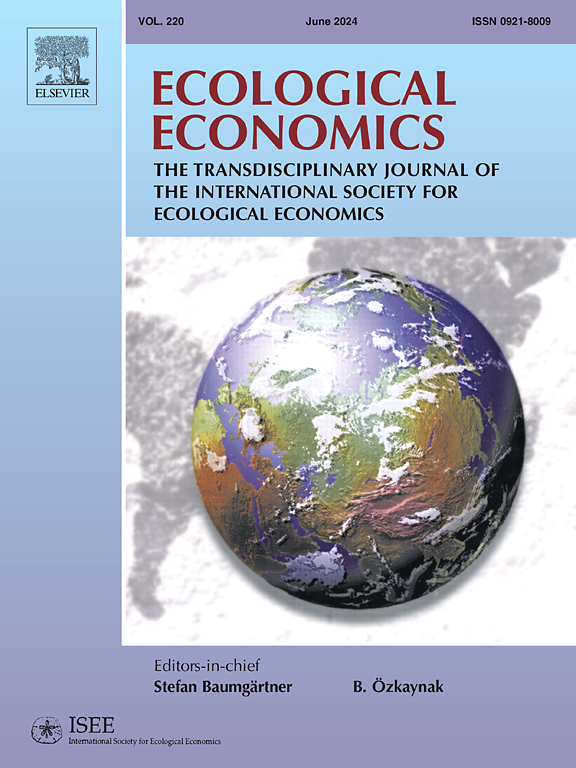Compact and livable? Identifying and managing the relationships between intensive land use and urban livability: Evidence from 337 cities in China
IF 6.6
2区 经济学
Q1 ECOLOGY
引用次数: 0
Abstract
Intensive land use (ILU) has an important impact on urban livability, necessitating an elucidation of their interaction to formulate rational urban development policies and enhance residents' well-being. Here, we explore the interaction between ILU and urban livability using an integrated framework. Based on panel data from 337 cities in China (2002−2022), we applied the coupling coordination degree model, the binary spatial autocorrelation model, and the nonlinear spatial Durbin model (SDM). Our findings indicate that the direct impact of ILU on urban livability follows an N-shaped curve, that is, urban livability exhibits an up-down-up trend as ILU increases. ILU also exerts an N-shaped spatial spillover effect on the urban livability of neighboring cities. Moreover, the adaptation between ILU and urban livability has improved over the study period, although the national adaptation level remains relatively low. Eastern China shows higher adaptation levels compared to western regions. These results suggest that local governments should integrate the adaptation relationship between ILU and urban livability into ILU assessment indicators to ensure sustainable urban development.
求助全文
约1分钟内获得全文
求助全文
来源期刊

Ecological Economics
环境科学-环境科学
CiteScore
12.00
自引率
5.70%
发文量
313
审稿时长
6 months
期刊介绍:
Ecological Economics is concerned with extending and integrating the understanding of the interfaces and interplay between "nature''s household" (ecosystems) and "humanity''s household" (the economy). Ecological economics is an interdisciplinary field defined by a set of concrete problems or challenges related to governing economic activity in a way that promotes human well-being, sustainability, and justice. The journal thus emphasizes critical work that draws on and integrates elements of ecological science, economics, and the analysis of values, behaviors, cultural practices, institutional structures, and societal dynamics. The journal is transdisciplinary in spirit and methodologically open, drawing on the insights offered by a variety of intellectual traditions, and appealing to a diverse readership.
Specific research areas covered include: valuation of natural resources, sustainable agriculture and development, ecologically integrated technology, integrated ecologic-economic modelling at scales from local to regional to global, implications of thermodynamics for economics and ecology, renewable resource management and conservation, critical assessments of the basic assumptions underlying current economic and ecological paradigms and the implications of alternative assumptions, economic and ecological consequences of genetically engineered organisms, and gene pool inventory and management, alternative principles for valuing natural wealth, integrating natural resources and environmental services into national income and wealth accounts, methods of implementing efficient environmental policies, case studies of economic-ecologic conflict or harmony, etc. New issues in this area are rapidly emerging and will find a ready forum in Ecological Economics.
 求助内容:
求助内容: 应助结果提醒方式:
应助结果提醒方式:


